Digital Asset Management Workflow
Digital assets are media files that have value for your business. They can be images, videos, documents, audio, and more. Managing these assets well is hard. This is especially true when you have to handle many teams, projects, and channels.
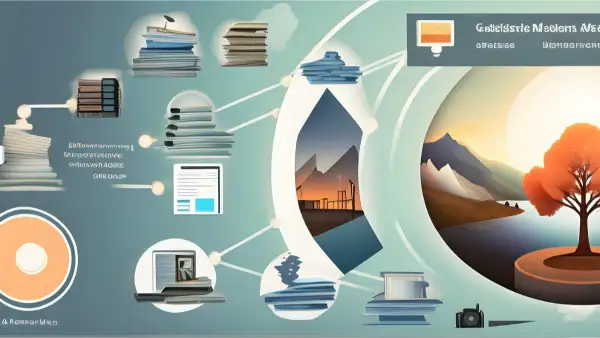
That’s why you need a digital asset management (DAM) workflow. It’s a set of steps and processes. They help you make, organize, store, find, and share your digital things.
A DAM workflow can help you streamline your content creation and performance. It can improve your collaboration and communication. It can ensure your brand’s consistency and quality. In this article, we will explain what a DAM workflow is. We will cover the types of DAM workflows, their benefits, and how to create and optimize your own.
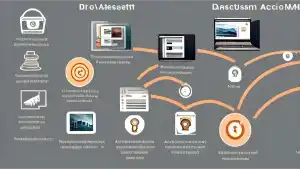
What are the Components of a DAM Workflow?
A DAM workflow typically consists of five stages:
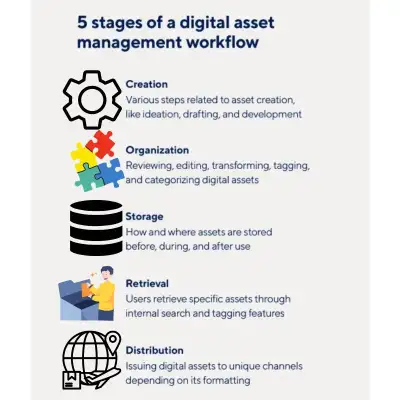
Creation: This is the first stage of a DAM workflow, where you produce or acquire your digital assets. You may make your own assets from scratch. Or, you can use assets from your DAM system or third-party sources. You may also need to define the specs, needs, and goals of your assets. This includes their format, size, resolution, and purpose.
Organization:
This is the stage where you review, edit, transform, tag, and categorize your digital assets. You may need to change your assets. This could involve cropping, resizing, or converting them. You may also need to add metadata to your assets. For example, keywords, descriptions, and categories can make them easier to find. They also make them easier to use. You may also need to assign permissions and roles to your assets, to control who can access, edit, or share them.
Storage:
This is the stage where you store your digital assets in one place. This place could be a cloud server or a DAM system. This ensures that your assets are secure, accessible, and backed up. You may also need to manage the versions and revisions of your assets. You must keep track of the changes and updates that you or your team members make.
Retrieval
This is the stage where you access and use your digital assets for your projects and campaigns. You may need to search for your assets using keywords or metadata. Or, you can browse through your categories or folders. You may also need to preview, download, or export your assets. You may need to do this for different platforms or applications, depending on your needs.Know More About Digital Asset Management Jobs
Distribution
This is the last stage of a DAM workflow. Here, you share your digital assets with your target audience. You may need to split your assets. You may need to split them among websites, social media, email, and print. You may also need to measure and analyze the performance of your assets. This includes their impact. They cause views, clicks, conversions, and feedback.
What are the Types of DAM Workflows?
There are different types of DAM workflows. The type you choose depends on your business goals and needs. Some of the most common types are:
Collaborative workflow
: This is a workflow that involves multiple users working on a single asset or project. You may need to work with your team. You’ll assign tasks, set deadlines, and give feedback. Then, you’ll approve the final output. Working together can help you improve teamwork and efficiency. It also cuts errors and inconsistencies.
Sequential workflow
: This is a workflow that follows a predefined order of steps and processes. You may need to complete each step before moving to the next. You must follow the rules and guidelines for each step. A sequence of steps can help you standardize your operations. It will ensure your quality and compliance.
Conditional workflow
: This is a workflow that adapts to different scenarios and situations. You may need to make decisions based on conditions or criteria. These could include the type, format, or destination of your assets. A conditional workflow can help you customize your workflow and optimize your outcomes.
What are the Benefits of a DAM Workflow?
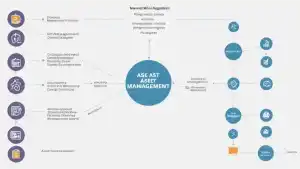
A DAM workflow can bring many benefits to your business, such as:
Saving time and money:
A DAM workflow can help you automate and simplify tasks. It reduces the time and effort of managing your digital assets. This can also help you save money. It can save on resources like storage, bandwidth, and software licenses.
Enhancing productivity and creativity
A DAM workflow can help you streamline your work and remove bottlenecks. It will improve your productivity and efficiency. This can also help you focus on your core activities. It can unleash your creativity, instead of wasting time on mundane tasks.
Boosting collaboration and communication:
A DAM workflow can help you collaborate and communicate with your team. It can also help with clients or partners. You can easily share, access, and edit your assets. You can also provide feedback and approval. You can do all this using a single, integrated platform. This can also help you avoid misunderstandings, conflicts, or duplication of work.
Maintaining brand consistency and quality:
A DAM workflow can help you. It ensures that your digital assets fit your brand’s identity and standards. You can also monitor the quality and performance of your assets. You can ensure they meet your expectations and goals.
How to Create and Optimize Your DAM Workflow?
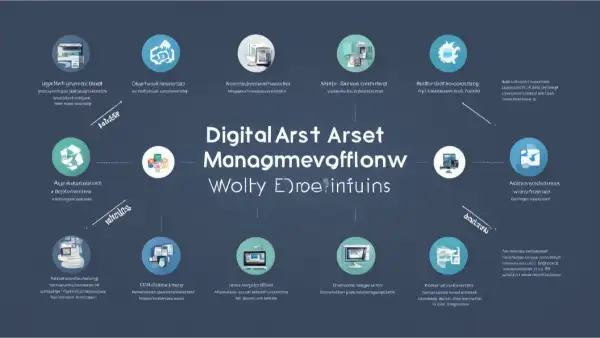
Making and improving your DAM workflow can be hard and complex. But, it can also be rewarding and helpful. Here are some steps that you can follow to create and optimize your DAM workflow:
Analyze your current situation. Before you create or improve your DAM workflow, you need to understand it. Find its pain points and opportunities. You can ask yourself questions such as: What are the types and sources of your digital assets? How do you create, organize, store, retrieve, and distribute your assets? What are the challenges and problems that you face? What are the goals and objectives that you want to achieve?
Define your requirements and expectations
After you analyze your current situation. You need to set your requirements and expectations for your DAM workflow. You can ask yourself questions. For example: What features and functions do you need from your DAM system? What are the roles and responsibilities that you need to assign to your users? What are the standards and guidelines that you need to follow for your assets? What are the metrics and indicators that you need to measure and evaluate your assets?
Choose your tools and solutions:
Once you define your needs and expectations, you need to choose tools and solutions. They will help you implement your DAM workflow. You can ask yourself questions. For example: What are the best DAM systems or platforms? They must suit your needs and budget. What are the best integrations or extensions that can enhance your DAM system? What are the best practices or tips that can help you use your DAM system effectively?
Test and refine your workflow
After you choose your tools and solutions, you need to test and refine your DAM workflow. You can ask yourself questions such as: How well does your DAM workflow work in practice? What are the feedback and results that you get from your users and stakeholders? What are the areas or aspects that you need to improve or optimize?
Frequently Asked Questions ?
What is a digital asset management workflow?
A digital asset management workflow is a set of steps and processes. They help you create, organize, store, find, and share digital assets.
Q: What are the five stages of a digital asset management workflow?
The workflow has five stages. They are: creation, organization, storage, retrieval, and distribution.
Q: What are the types of digital asset management workflows?
A: The types of digital asset management workflows are collaborative, sequential, and conditional.
Q: What are the benefits of a digital asset management workflow?
The benefits of a digital asset management workflow are many. It saves time and money. It also boosts creativity and productivity. It improves collaboration and communication. And, it keeps brand consistency and quality.
Q: How can you create and optimize your digital asset management workflow?
You can make and improve your digital asset management workflow. Do this by analyzing your current situation. Then, define your requirements and expectations. Next, choose your tools and solutions. Finally, test and refine your workflow.
What are some popular DAM systems?
Some popular DAM systems are Adobe Experience Manager Assets and Cloudinary Assets. Also, there are Acquia DAM (Widen) and Brandfolder. These systems offer many benefits. They help manage, share, and reuse digital assets across channels and platforms.
How do I choose the right metadata for my assets?
To choose the right metadata for your assets, you need to understand its types and purposes. These include descriptive, administrative, and structural metadata. You also need to make a metadata taxonomy. It will define the fields, values, and standards for your assets. Additionally, you need to use a DAM system. It must support adding, changing, and finding metadata. For example, use OpenAsset or ResourceSpace.
Can you give me an example of a successful DAM workflow implementation?
A successful DAM workflow has many steps. These include: finding the right product for your company. Getting leadership buy-in. Building a project team. Implementing in phases. Using the right partner. Understanding the vendor roadmap. Setting governance policies. Getting users on board. Integrating DAM with internal systems. And creating a DAM community.
I hope you found this article helpful and informative. If you have any questions or feedback, please let me know. 😊

Everyone loves what you guys tend to be up too. This kind of clever work and coverage!
Keep up the great works guys I’ve included you guys to my personal blogroll.